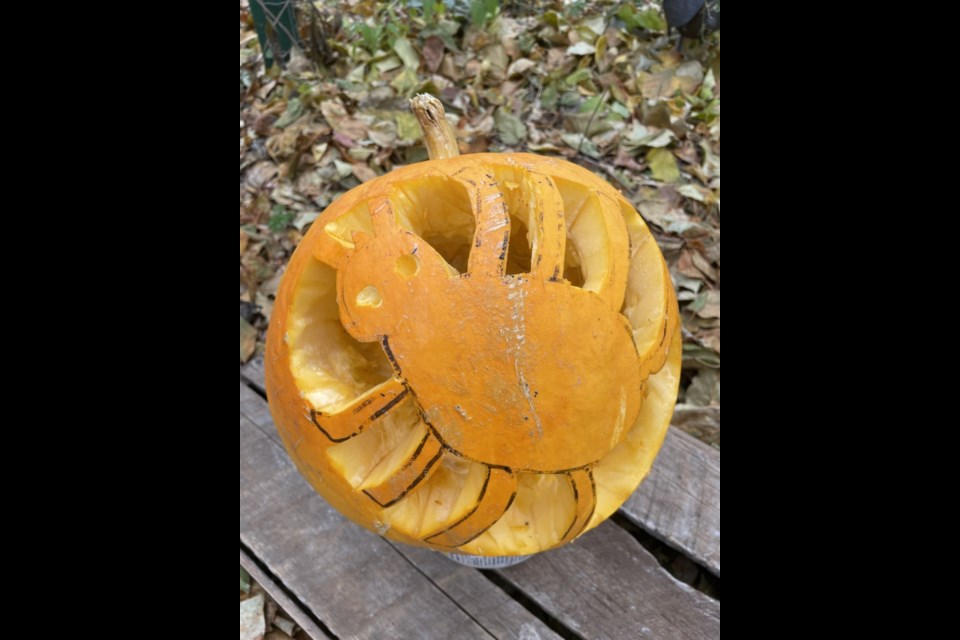I thought that pumpkins were the most popular Halloween decoration but in the past few years, spiders are also becoming more evident. I have always liked spiders, and they are common both indoors and outside in rural Wales, where I grew up. There is an old Welsh saying that it is unlucky to step on a spider because if you kill it, it will rain. Given the damp, Welsh climate, there is a strong possibility that it will rain sometime soon, even if you don’t kill a spider. But to a small child, it was a very good reason not to kill a spider.
Spiders are thought to be associated with scary places, such as graveyards, dark and dusty old buildings, haunted houses, graveyards and other abandoned structures. Some people feel that the webs are creepy, and they certainly could frighten you if they brushed against your face in the dark! Spiders are also considered to be familiar companions of witches, along with black cats, and of course, witches are a very common, infamous Halloween symbol.
Black is the colour associated with death, and although I have seen many coloured spiders in my garden, all the Halloween decorations use black spiders. Maybe they are all Black Widow spiders! There are two species of black widow spider in Canada, the western black widow is found in parts of British Columbia across the prairies to Manitoba and occurs naturally in the south/south-west of Saskatchewan. The northern black widow is found in southern and eastern Ontario. A female black widow can bite and cause severe pain at the bite site, but the bite is generally not life-threatening, although it may be more harmful to children and seniors. In Saskatchewan, these spiders usually are found in dark, sheltered spaces close to the ground, like brush piles or underneath buildings. They like warmer temperatures, and you are very unlikely to encounter a live one on a chilly Halloween night on the prairies.
Halloween was originally a pagan holiday that marked the transition from summer to a cooler season. This temperature change can also encourage insects, and their predators – spiders, to find a warmer place to live, and this may mean they move into your home in October. While it is probably a good thing that the spiders eat bugs in your home, many people do not appreciate the webs that they make. While webs you see outdoors, with dewdrops clinging to the threads, sparkling in the early sunlight, are very beautiful, not many people want to see them in corners of their homes. If there are many spider webs indoors this may mean you have lots of spider food in your house, and you might want to consider a thorough cleaning, to remove the insect food.
However, one of the old folklore legends is that a spider in your house may be the spirit of a loved one watching over you. In that case, you wouldn’t want to be sweeping a friendly spirit out of your house.
Another good reason to be nice to spiders in your garden is because they are insectivorous and feed primarily on insects that can damage the plants in your garden. Some of the common insects eaten by spiders are aphids, grasshoppers, flies, mosquitoes and wasps. They can also eat bees, which are not a pest in your garden, of course. I have noticed the white crab spiders that hide in the flowers of my rosebush can catch small bees but not bumble bees.
I am happy to see so many spiders flourishing in Halloween decorations, and this year I decided to combine pumpkin carving with spider decorations by carving one into our pumpkin. Not a spectacular result but not too bad for a first attempt.
I hope you all enjoy the decorations as you “trick or treat”, and that the spiders you encounter are not too scary.
Byline: Jill Thomson is a plant disease specialist (retired) who enjoys gardening in Saskatoon with her family, including the dogs.
This column is provided courtesy of the Saskatchewan Perennial Society (SPS; [email protected]). Check our website (www.saskperennial.ca) or Facebook page (www.facebook.com/saskperennial) for a list of upcoming gardening events.




